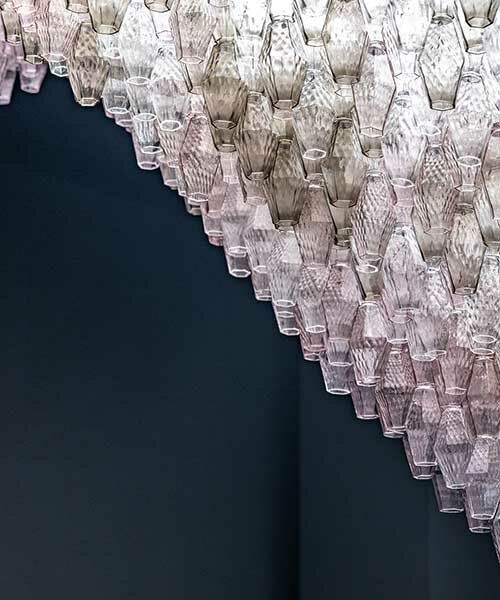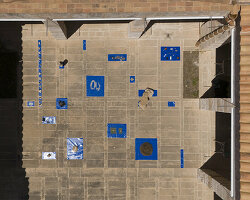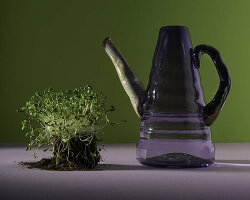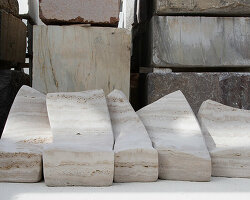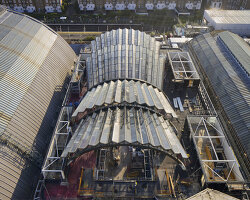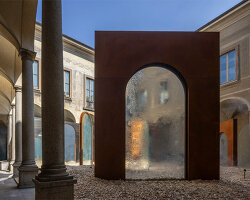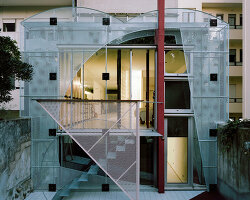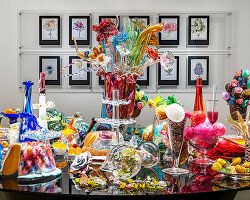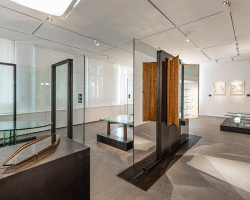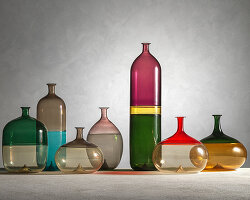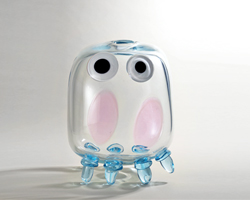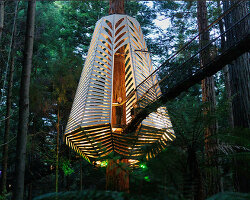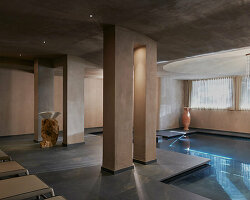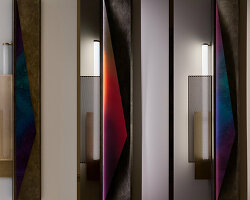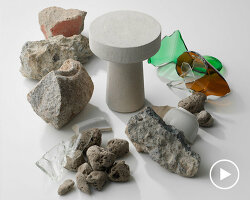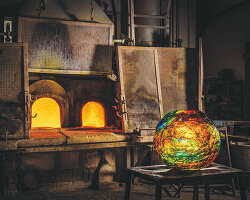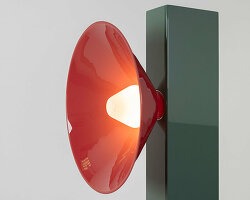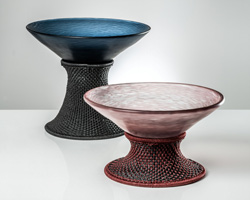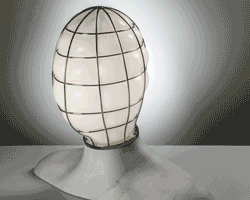EXHIBITION ‘VENINI: LIGHT 1921-1985’ AT LE STANZE DEL VETRO
To pay tribute to the distinguishable production of Murano glass, Le Stanze del Vetro presents the exhibition Venini: Light 1921- 1985, dedicated to the history of the Venini iconic glassworks. Curated by Marino Barovier, the works from masters Carlo Scarpa, Gio Ponti, Franco Albini, and more, light up the rooms of Fondazione Giorgio Cini, in Venice. Thanks to its constant renewal and openness towards design, the manufacturing company made a reference point for the most important architects of the twentieth century within the field of lighting through the renowned furnace.
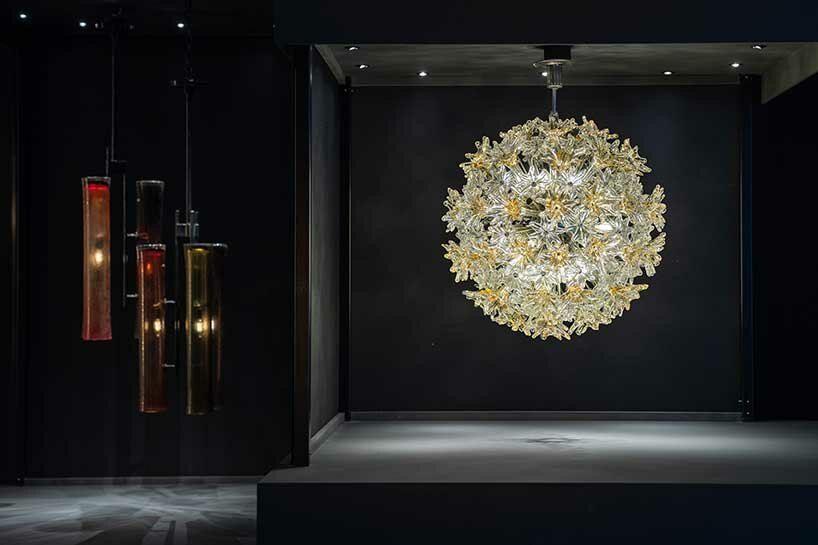
Venini: Light 1921- 1985 is dedicated to the history of the Venini glassworks, running at Le Stanze del Vetro until 8 January, 2023
all images courtesy of Le Stanze del Vetro
the 81 objects illustrate light design changing through time
Curated by Marino Barovier, Venini: Light 1921-1985 is the autumn exhibition dedicated to the Venini glassworks. Running at Le Stanze del Vetro, the show aims to recount the production of the renowned Murano furnace in the field of lighting, from small to large scale, showcasing some of the most representative examples. The exhibition features a handpicked selection of eighty-one objects conceived by the various designers who collaborated with the furnace or by the technical office of the glassworks itself, illustrating how the theme of light was tackled in the various decades, spanning a period of time from 1921 to 1985.
The exhibition is accompanied by a catalogue published by Skira and edited by Marino Barovier and Carla Sonego, which illustrates the main lighting interventions carried out by the furnace and illustrates the pieces on display.
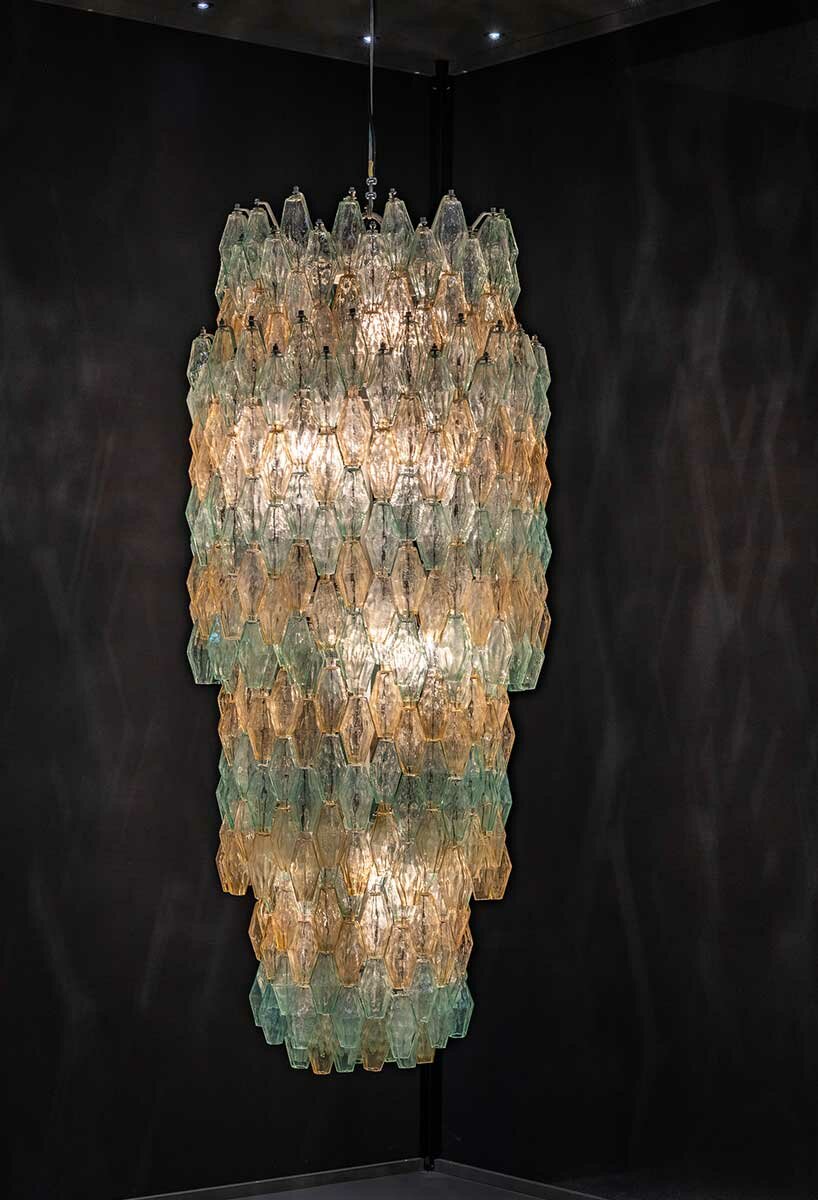
installation view
The protagonists include the Murano painter Vittorio Zecchin, with his refined reworking of the chandelier in the early 1920s; the sculptor Napoleone Martinuzzi, with his original pulegoso glass artefacts of 1928–30; followed by the architects Tomaso Buzzi and Carlo Scarpa, the latter of whom had a longstanding collaboration with the glassworks ending in 1947. In the 1950s, the privileged relationship between designers and the Murano furnace was further confirmed, involving architects such as Gio Ponti, Franco Albini, Ignazio Gardella and the Studio BBPR. Moreover, during this same period, Paolo Venini also called young people from the Scuola di Architettura in Venice to the glassworks, including Massimo Vignelli, who designed a series of lamps inspired by Nordic design, revisited in a Murano style.
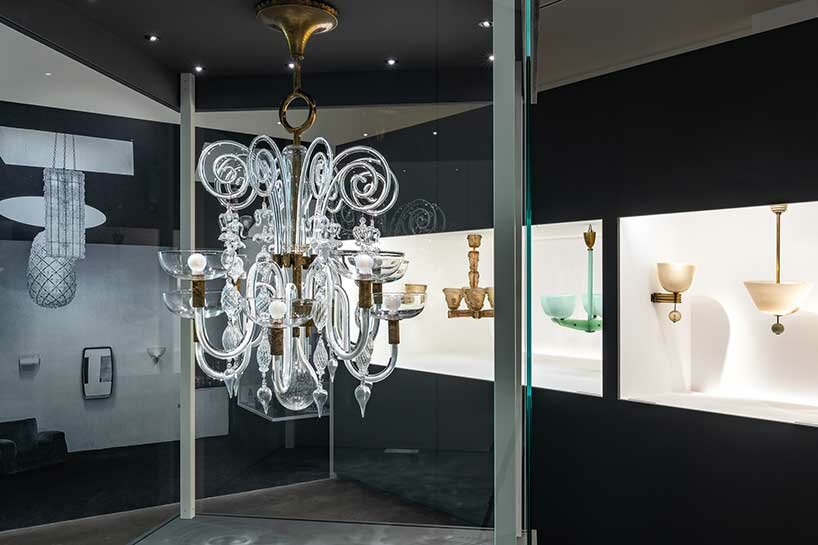
installation view
The exhibition pays tribute to carlo scarpa
The exhibition also features two large-scale installations in the Sala Carnelutti and Piccolo Teatro of the Fondazione Giorgio Cini: as a tribute to Carlo Scarpa the monumental polychrome chandelier made of polyhedrons, made of approximately 4,000 elements, designed by the architect for the Veneto pavilion at the ‘Italia 61’ exhibition in Turin in 1961, has been especially recreated, along with the prominent Velario made in 1951 for the roof of Palazzo Grassi with a series of ‘festoons’ with steel cables and balloton crystal glass spheres. The Velario was dismantled in 1985 and is now visible for the first time in almost forty years.
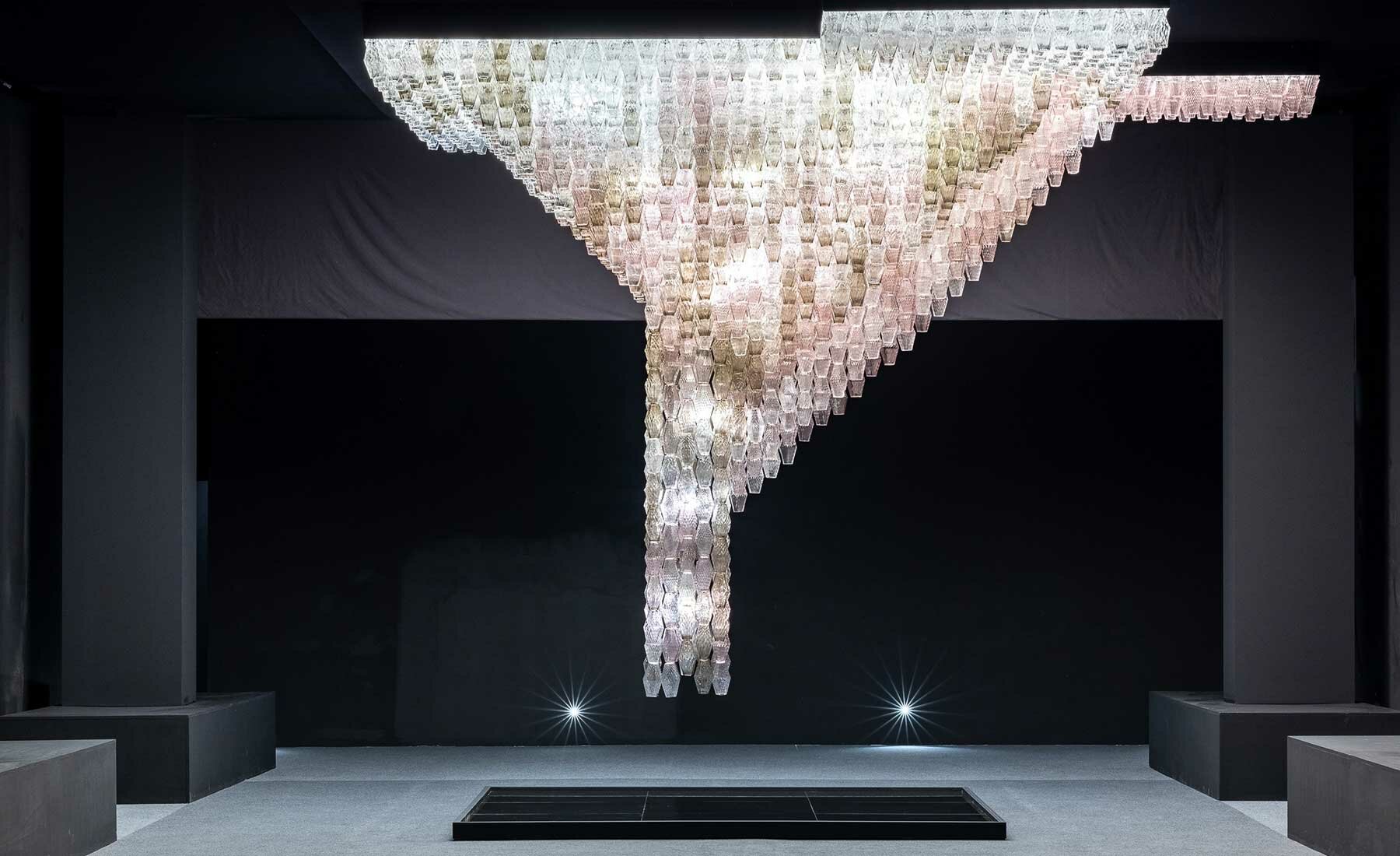
Le Stanze del Vetro pays tribute to Carlo Scarpa’s monumental chandelier designed for the Veneto pavilion at the Turin Expo ‘Italia 61’ in 1961
The first room of the exhibition features the 1921 Cappelin Venini works, born out of a partnership between Giacomo Cappellin and Paolo Venini. Designed by Vittorio Zecchin, the numerous lamps of various sizes and shapes were modelled for chandeliers both for domestic as well as public environments like hotels and theaters. They are produced in monochrome transparent glass in soft color shades and characterized by lines inspired by antique models, such as the classical lantern, but even more so the 18th and 19th-century Venetian chandelier, which was reinterpreted with elegance and sobriety.
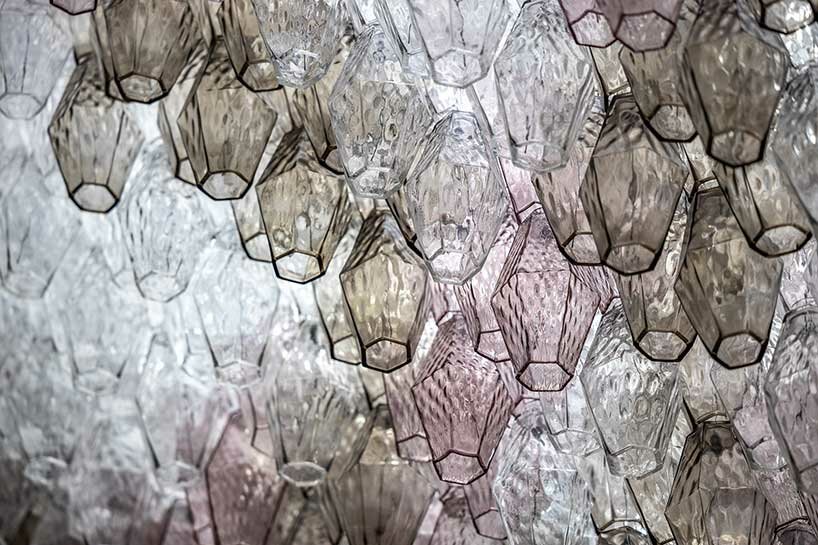
installation view
Having perfected the technique of pulegoso glass, sculptor Napoleone Martinuzzi takes over the second room. The semi-opaque material characterized by the inclusion of tiny bubbles form into table, hanging and wall lamps with bell-shaped elements – some of which were exhibited in Monza’s Palazzo Reale at the 4th Triennale, in 1930. Venini also developed themes characteristic of Tomaso Buzzi, such as the lamps with the feather aesthetic in incamiciato glass with several colors.
In the next room, Carlo Scarpa‘s glassworks are exhibited, taking us back to the 6th Triennale of Milan, in 1936. The very modern hanging and wall lamps are accentuated with geometrical lines, some also produced with techniques that use corroded glass. Moreover, the Architect’s and Designer’s pendant lamp is also displayed, recreated as a spirited interpretation of the original chandelier exhibited at the 7th Triennale of 1940.
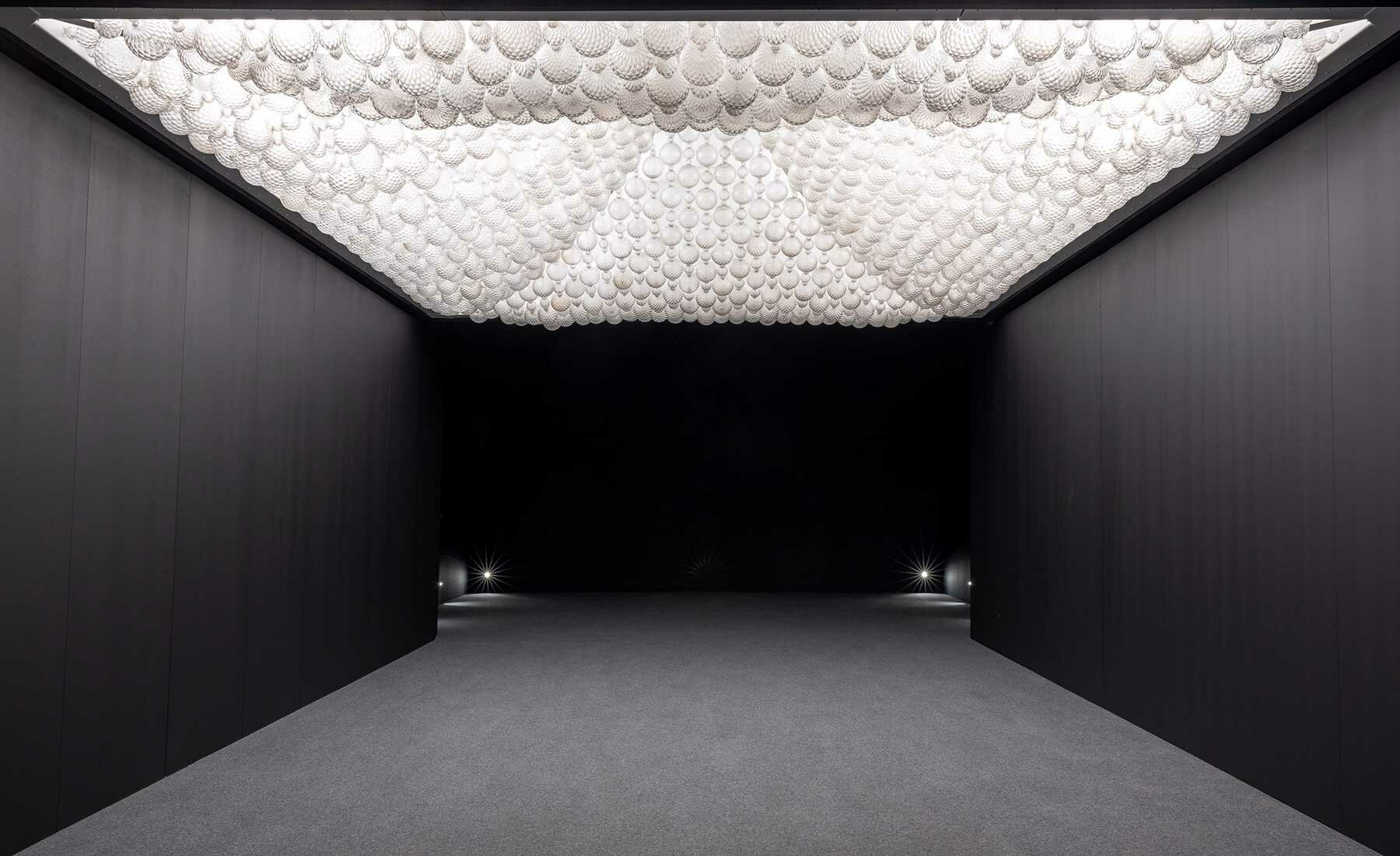
Velarium of Palazzo Grassi recreated for the exhibition with the original spheres from 1951
From the 1930s onwards the glassworks devoted itself to studying and developing new lighting solutions by using modular systems in undulating glass. These solutions aroused the interest of various architects who repeatedly adopted Venini modular systems in their projects for public buildings. In the fourth room we find the lamps of Carlo Scarpa in cristallo glass, used for the railway stations and post offices designed by the architect Angiolo Mazzoni.
In the 1950s the repertoire of the glassworks was enriched with new, episodic contributions. Gio Ponti designed the famous chandelier in polychrome transparent glass (1946-48), which reworked the idea of the chandelier, emphasizing the color value of the piece. Franco Albini on the other hand contributed the pendant lamp designed for the auditorium of the 10th Triennale of Milan in 1954, which soon thereafter was included in the catalogue together with some variants. In the same space, BBPR studio exhibits its colorful pendant lamps for the Olivetti store of New York (1954), while Massimo Vignelli reinterprets his Nordic inspiration in the Murano colors and techniques exhibited at events such as the Venice Biennale in 1956 and ’58.
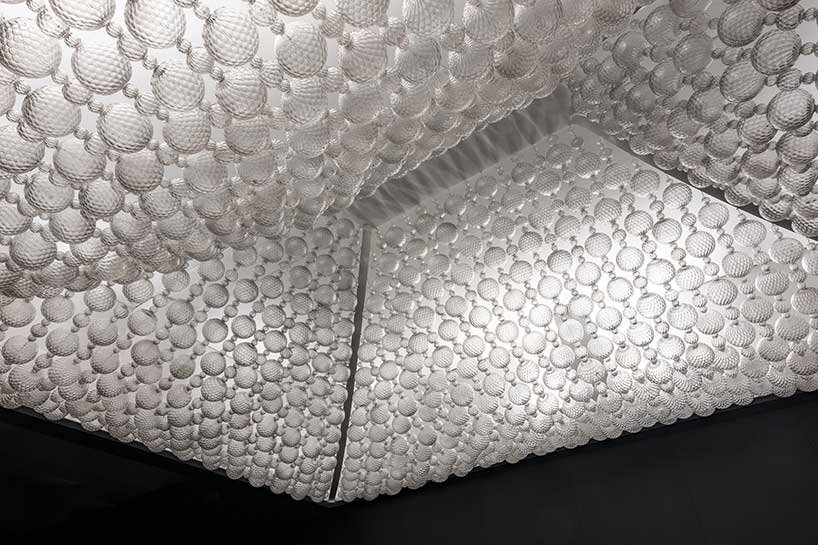
close-up of the spheres in cristallo balloton glass used for the installation at the Velarium of Palazzo Grassi
Blown or hand-worked glass enters the course of the 1950s. Fixed to a metal frame produced for the purpose, the elements provided the possibility of creating luminous solutions on a small or grand scale with original forms differing greatly from what was common on the market at the time. Among the first and most important examples are the poliedri, which were displayed in 1958 at the Exposition Universelle of Brussels and the Biennale of Venice. On display in this room, as an example, is a selection of appliances produced with some of the modules marketed between 1958 and 1972. Among these are hanging lights, such as the Esprit lamps (1964), after a design by Toni Zuccheri; the chandelier with canne trilobo (1969), representative of all solutions composed of solid canes; and the Pastorale installation (1972) composed of large glass hooks having a sculptural effect.
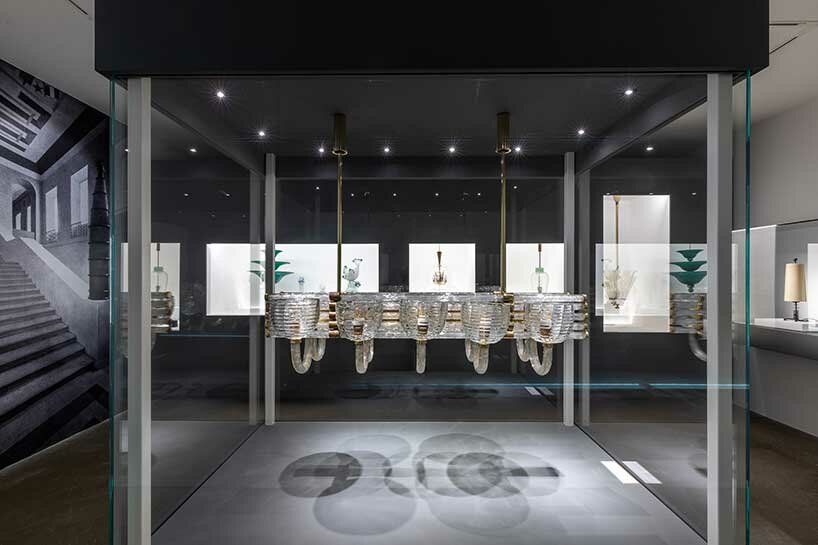
installation view
Revealed in the seventh room are the lamps and decorations for the Banqueting Hall, Principi di Piemonte Hotel in Turin. As archived and documented, the design for the many oval-shaped chandeliers present in the hall can be attributed to Scarpa himself. With metal frames, these large lights have screens with flowers and paterae in cristallo glass with aquamarine and amethyst finishes. Some of the decoration and lighting is still in situ, while the original ceiling of the banquet hall with the flowery glass decorations has been removed.
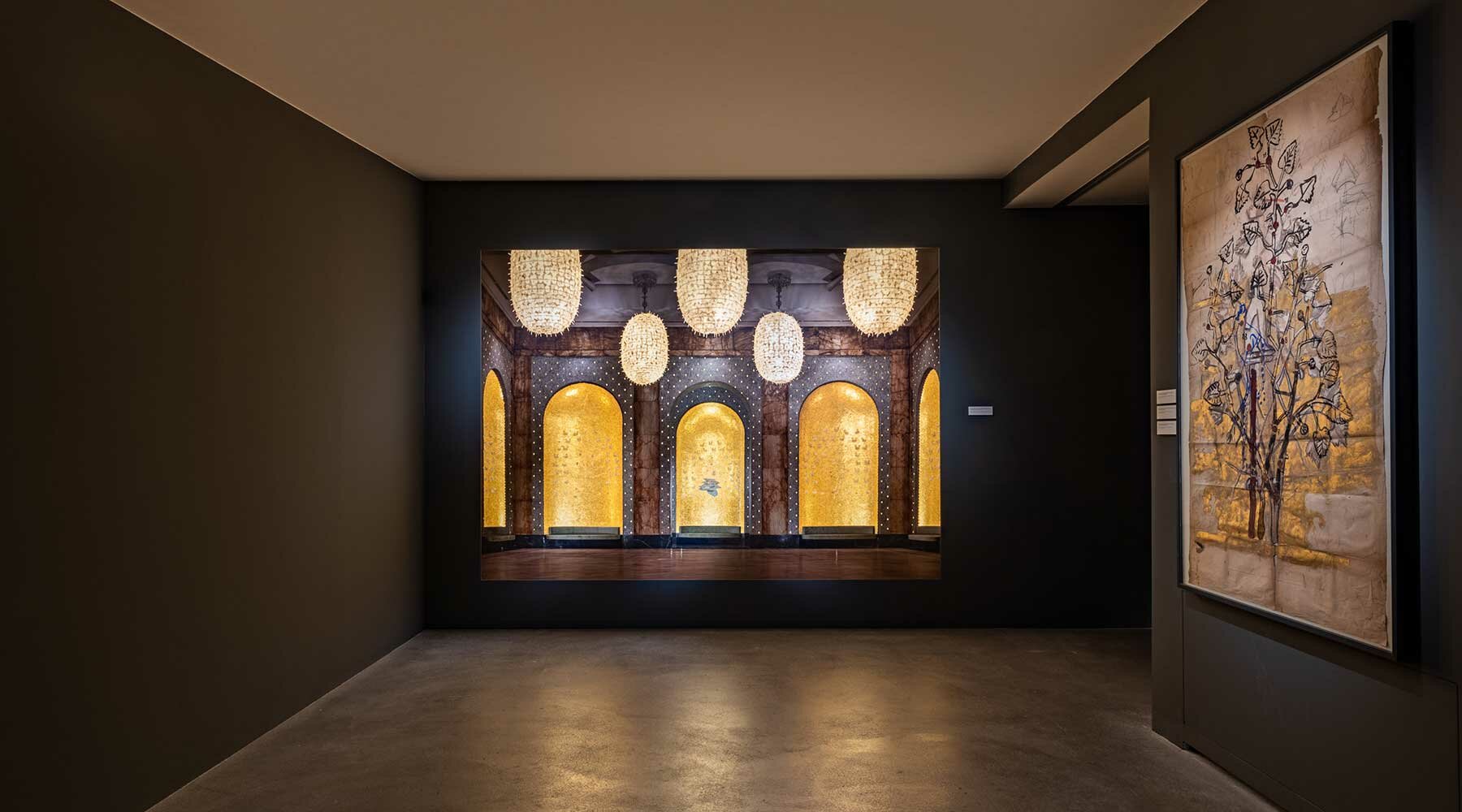
Banqueting Hall, Principi di Piemonte Hotel, Turin, installation view
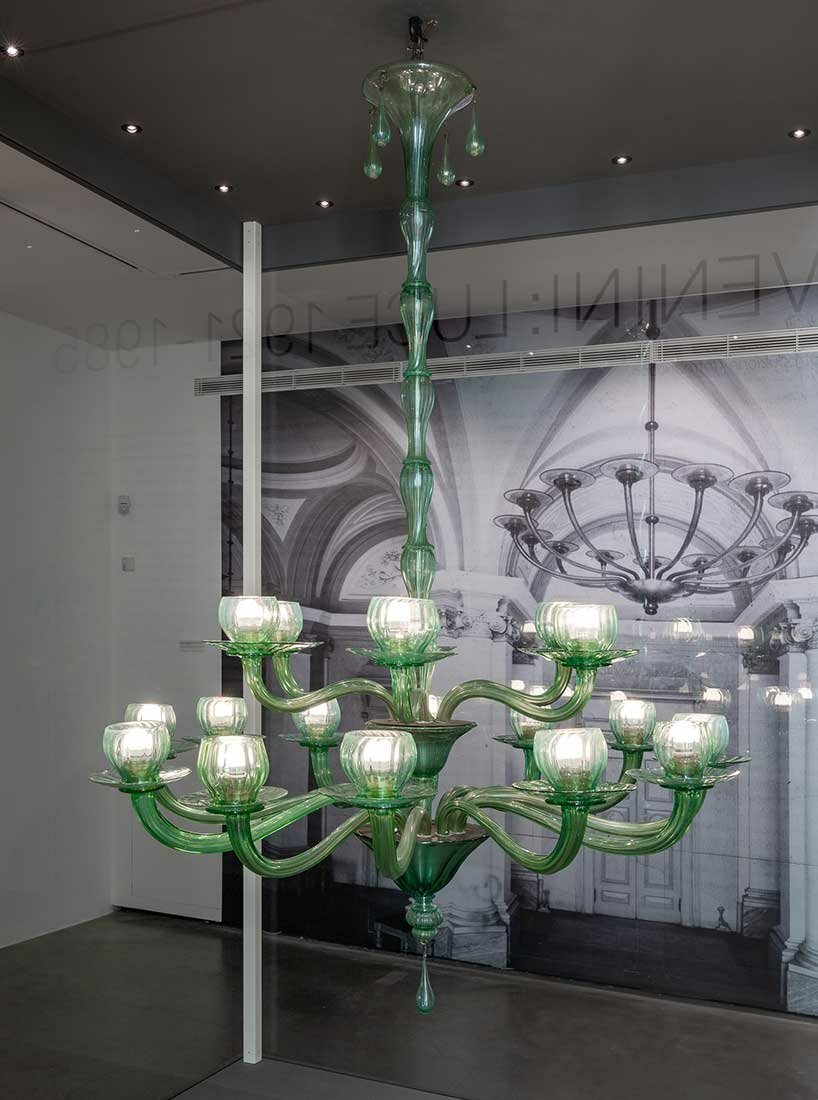
installation view
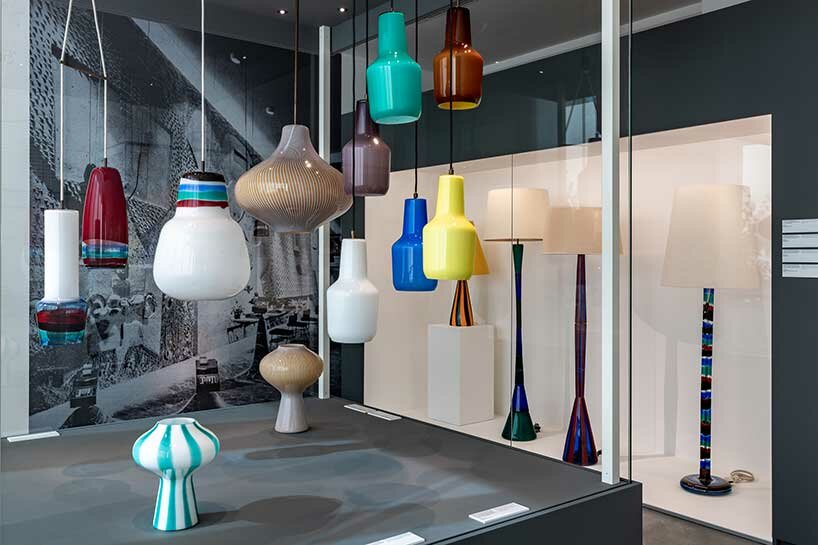
installation view
project info:
name: Venini: Light 1921-1985
brand: Le Stanze del Vetro /@lestanzedelvetro
curator: Marino Barovier
production: Fondazione Giorgio Cini and Pentagram Stiftung
venue: Le Stanze del Vetro, Fondazione Giorgio Cini
address: Venice, Island of San Giorgio Maggiore, Italy
dates: September 18, 2022 – January 8, 2023
catalogues: Skira
photography: Enrico Fiorese
exhibition design (589)
glass art and design (166)
le stanze del vetro (6)
lighting design (482)
venini (16)
PRODUCT LIBRARY
a diverse digital database that acts as a valuable guide in gaining insight and information about a product directly from the manufacturer, and serves as a rich reference point in developing a project or scheme.
